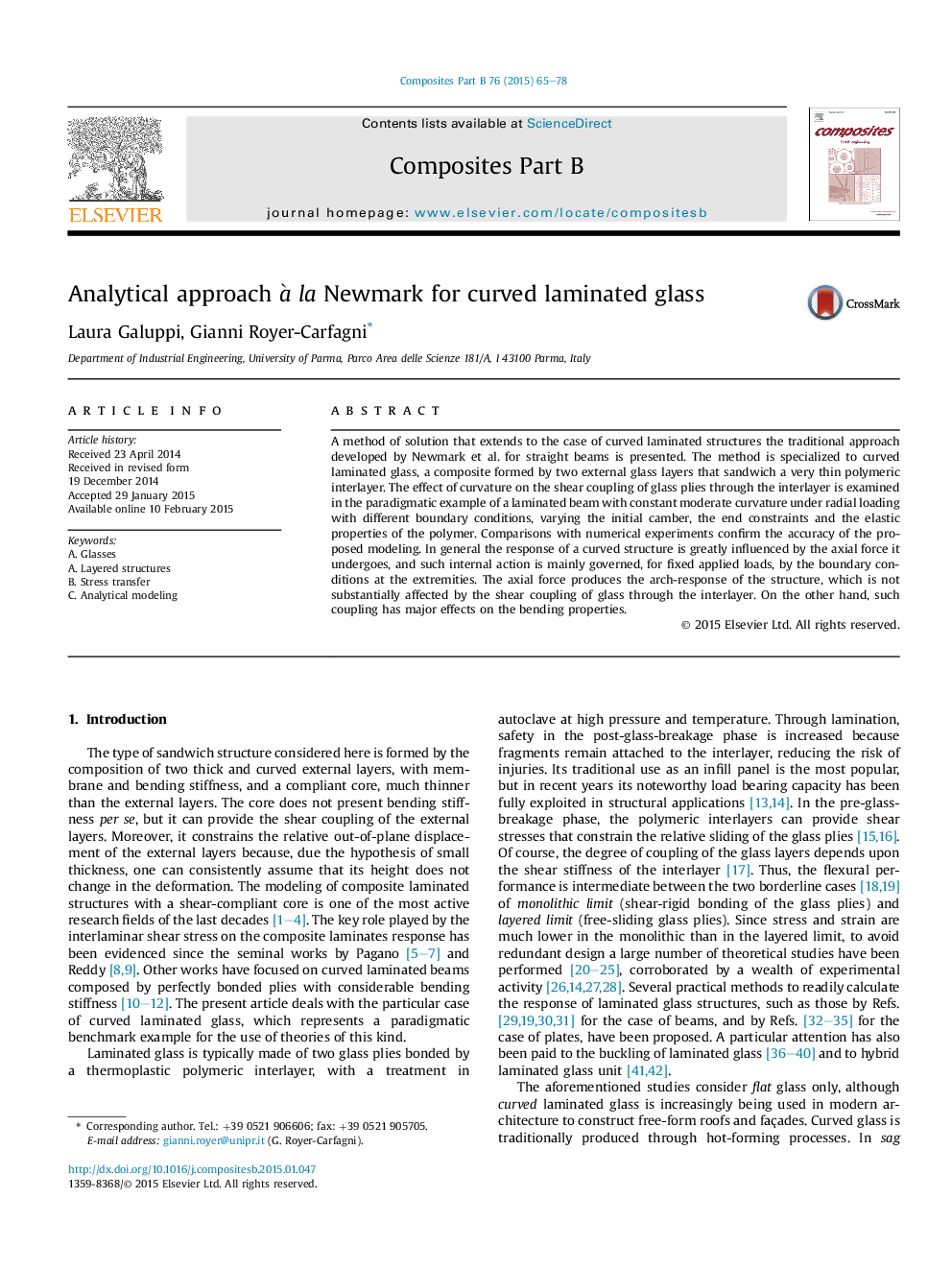| Article ID | Journal | Published Year | Pages | File Type |
|---|---|---|---|---|
| 817323 | Composites Part B: Engineering | 2015 | 14 Pages |
A method of solution that extends to the case of curved laminated structures the traditional approach developed by Newmark et al. for straight beams is presented. The method is specialized to curved laminated glass, a composite formed by two external glass layers that sandwich a very thin polymeric interlayer. The effect of curvature on the shear coupling of glass plies through the interlayer is examined in the paradigmatic example of a laminated beam with constant moderate curvature under radial loading with different boundary conditions, varying the initial camber, the end constraints and the elastic properties of the polymer. Comparisons with numerical experiments confirm the accuracy of the proposed modeling. In general the response of a curved structure is greatly influenced by the axial force it undergoes, and such internal action is mainly governed, for fixed applied loads, by the boundary conditions at the extremities. The axial force produces the arch-response of the structure, which is not substantially affected by the shear coupling of glass through the interlayer. On the other hand, such coupling has major effects on the bending properties.
